Tennis players, listen up! If you’ve outgrown your beginner racket, it’s time to upgrade your gear to the next level. We know the racquet market is a jungle – who has time to hack through the clutter of choices?
Lucky for you, we’ve already cut a path to the best advanced tennis racquets that will transform your shots and pump up your competitive game. We’re talking about high-performance racquets engineered for control, precision, and power – no gimmicks.
Our team demoed and tested the top racquets so you don’t have to. Whether your goal is more spin on serves, added stability for aggressive swings, or enhanced touch on finesse volleys, we’ll match you with your ideal specialized stick.
Ready to step out of the intermediate ranks and dominate the court? Read on for our service ace recommendations: the top racquets guaranteed to level up the skills and swings of competitive players. Your new secret weapon awaits. Game on!
Let me know if you would like me to modify or expand on this rewritten intro in any other way. I’m happy to keep refining the language and tone as needed.
Table of Contents
Quick Answer
Name of products | Wilson Pro Staff RF97 | Babolat Pure Strike 18x20 | Yonex EZONE DR 100 |
Product image |  |  |  |
Advantages |
|
|
|
Buy Here | |||
Rated by our team |
Our Top Picks
Wilson Pro Staff RF97 – Best Wilson Tennis Racquet for Advanced Players
Babolat Pure Strike 18×20 – Best Lightweight Tennis Racquets for Advanced Players
Yonex EZONE DR 100 – Best Yonex Tennis Racket for Advanced Players
Volkl V1 Pro – Top Tennis Racquets for Advanced Players
HEAD Graphene 360+ Extreme Tour – Best Tennis Racquet for Advanced Senior Player
Best Tennis Rackets for Advanced Players: Detailed Review
We will explore the nuances of various tennis rackets for advanced players available on the market, examining their features, performance, and player reviews. Whether you’re a seasoned tennis pro or an up-and-coming talent aiming to perfect your game, this guide will assist you in making an informed choice and finding the ideal racket to enhance your performance on the court.
Wilson Pro Staff RF97
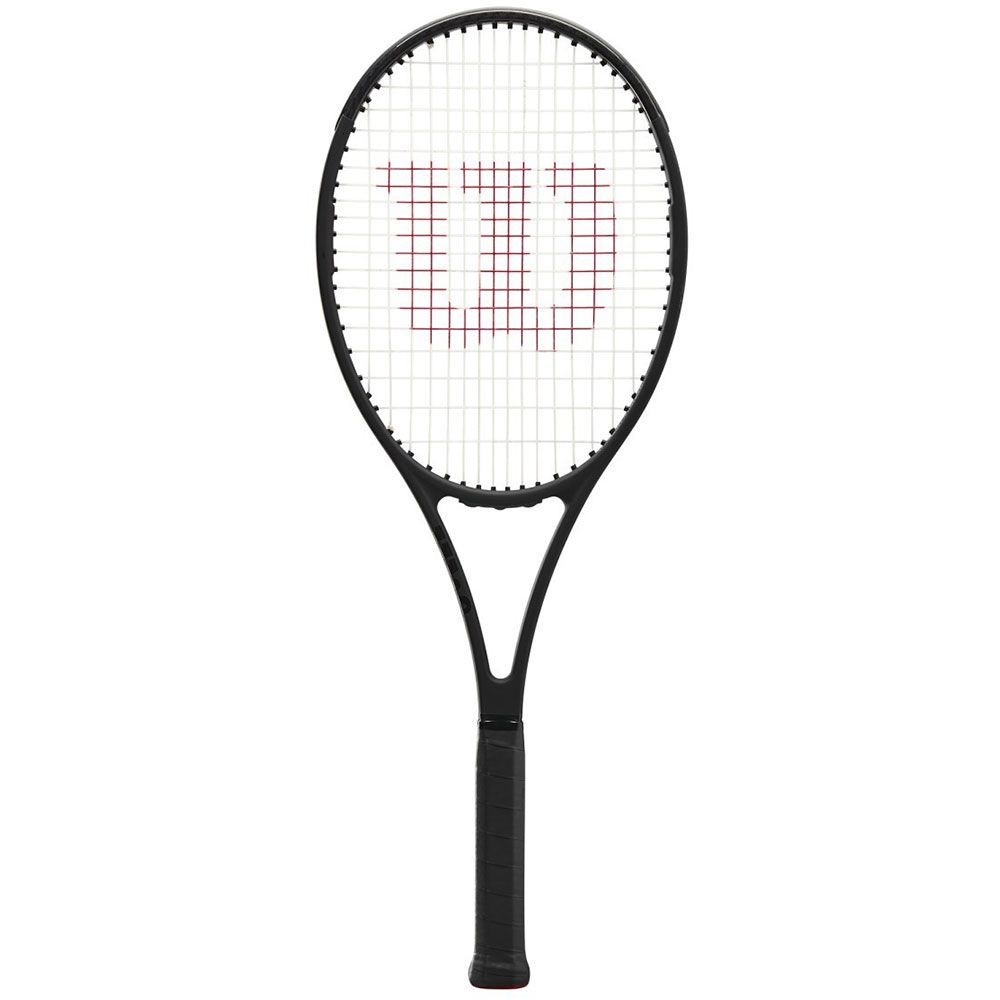
Our Rating: 9.9/10
Specs:
- 97 square inch head size for control and stability
- Braided graphite construction for enhanced feel
- Great plow through and stability for aggressive swingers
Item Description:
The Wilson Pro Staff RF97 v13, inspired by the iconic 1983 Pro Staff design, offers players a classic feel coupled with exceptional plow through and precision. Customized for Federer, its braided graphite composition and thin beam allow a deep connection with the ball, suitable for every court zone. Despite its traditional heavyweight, the racquet’s 16×19 string pattern provides modern spin and control. This iteration merges Roger’s favored black hue with a unique black, silver, and grey stripe design. With specs like a 97 sq. in. head size, 27-inch length, and a flex of 68, Federer’s signature reminds users of its legacy and inspiration. An ideal choice for those seeking a blend of tradition and modernity.
My Experience:
I’m totally smitten with my new racket. I’ve been loyal to Wilson since my early days of playing with a wooden racket in the 70s. This one’s just a tad heavier, but it feels fantastic, especially during serves – which is all I’ve tested so far.
Babolat Pure Strike 18×20
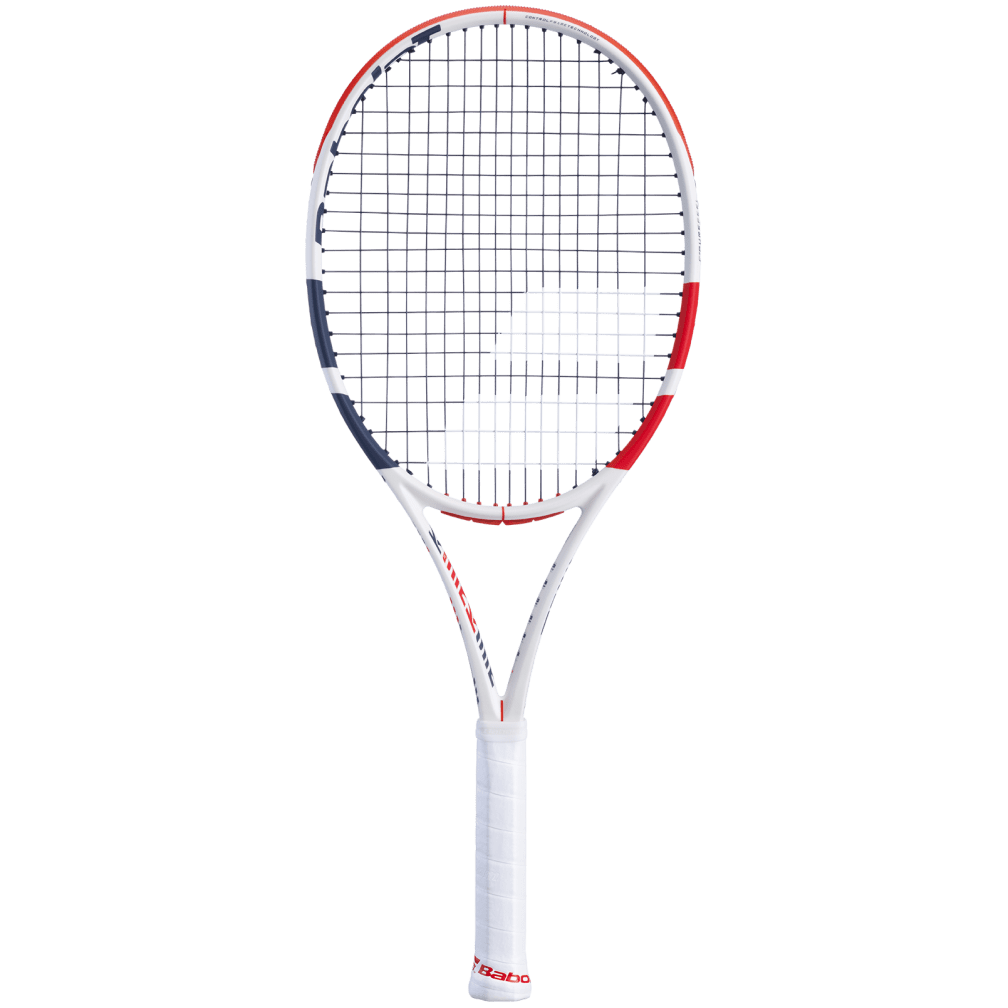
Our Rating: 9.7/10
Specs:
- Ideal for advanced baseliners seeking spin and power
- 100 square inch head with open string pattern
- Mix of control from stability frame and spin from strings
- Good balance of power, spin, and control
Item Description:
The Babolat Pure Strike 18×20, in its 3rd generation, is tailored for the modern aggressive player, blending sharp control with a pure feel for unparalleled shot response. It offers players the precision of an 18/20 string pattern, ensuring both power and accuracy on the court. Designed with the player in mind, its frame is highly responsive, ideal for those who play early, whether at the net or holding the baseline. The racquet’s stability, combined with the latest C² PURE FEEL technology powered by SMAC, ensures a cutting-edge vibration filtration, granting players a pure touch with every shot. Embodying both tradition and innovation, this racquet is a choice among BABOLAT’s pro players.
My Experience:
While the price might seem steep, this racquet clearly outperforms the $100 alternatives. It’s a justified choice for intermediate to advanced players, but for beginners, the difference might be less noticeable.
Yonex EZONE DR 100
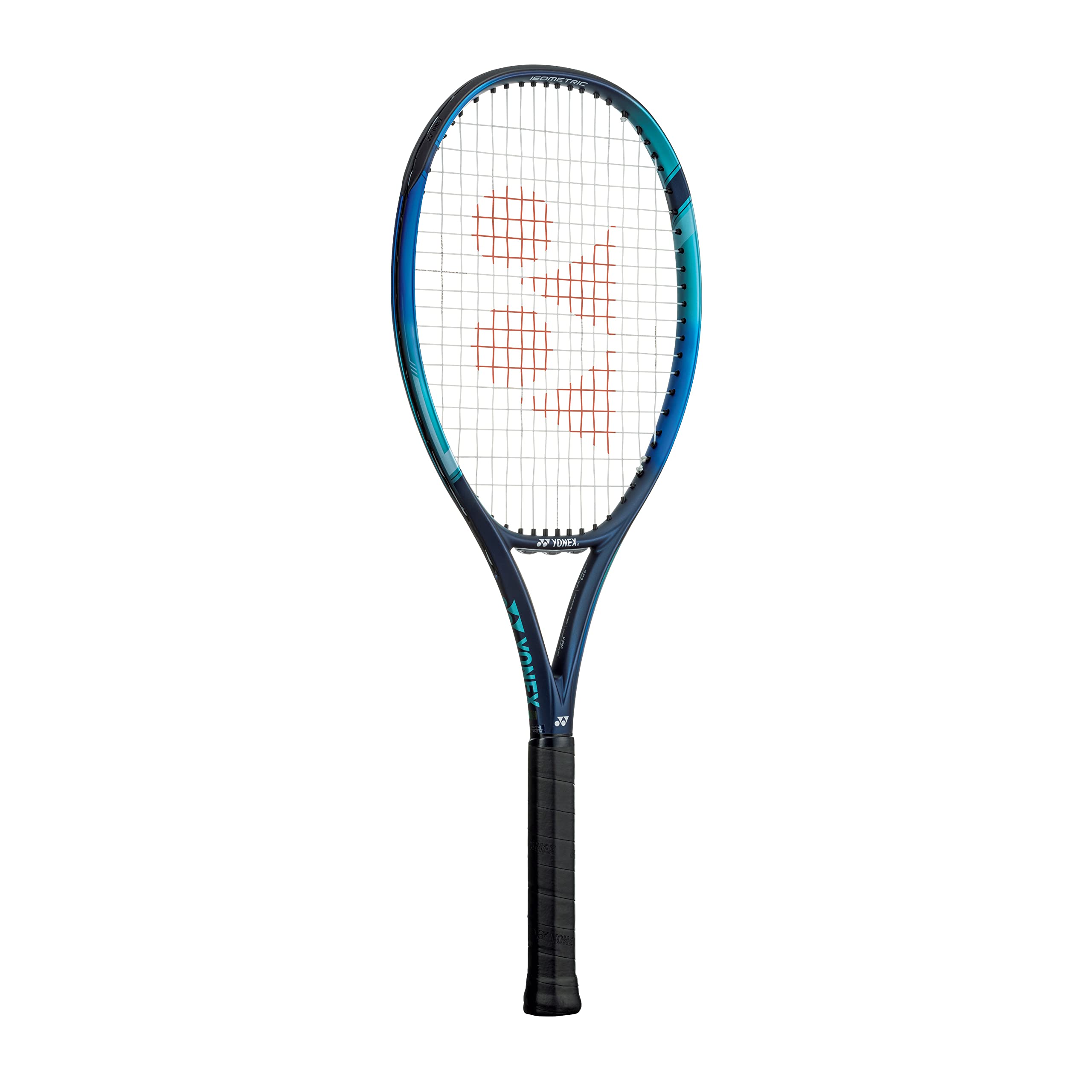
Our Rating: 9.6/10
Specs:
- Ideal for big hitters seeking control
- 100 square inch head for larger sweet spot
- Isometric head shape for more power
- Built-in vibration dampeners for more comfort
- Head-light balance aids quick swings and maneuverability
Item Description:
The Yonex EZONE DR 100 builds on the success of its predecessor, the EZONE Ai 100. Boasting an enhanced balance of power and control, it’s more potent than before. Key improvements include the addition of Nanometric DR for superior energy return and an updated grommet design, paired with Quake Shut Gel, for optimal shock absorption. The racquet retains Yonex’s signature Isometric square head shape. Tennis Warehouse playtesters, many of whom used the Ai 100, appreciate the DR 100’s power-packed yet controlled performance, despite a slightly stiffer feel. Ideal for intermediate to advanced players, the EZONE DR 100 elevates gameplay to new heights.
Volkl V1 Pro
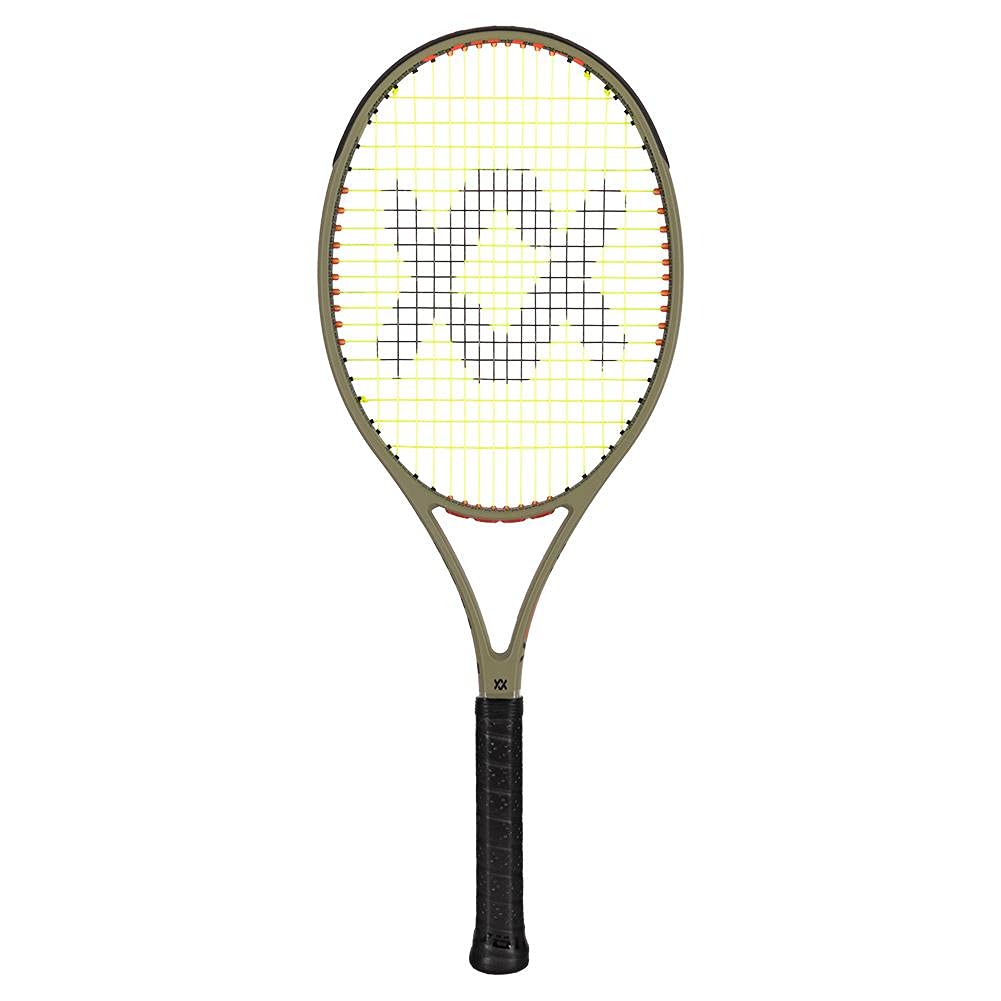
Our Rating: 9.5/10
Specs:
- 98 square inch head for expert control
- Stable frame great for doubles
- Comfortable and dampened feel
- Good option for all-court and transitional players
Item Description:
The V-Cell V1 Pro, uniquely crafted by Volkl, incorporates the Vario Beam design, minimizing shock and vibration, catering to players with powerful swings and stiff strings. This provides spin potential and precise control typically seen in thin beam frames. It’s enriched with REVA, MORE V-Cell Material, VTEX butt cap, Super Grommets, and a V-Sensor Handle, ensuring enhanced feel. Weighing at 305g, it boasts a 642cm2 head, 23-20-23mm Vario beam, 68.5cm length, and a 0.7in head-light balance, paired with a 16×19 string pattern. The V1 Pro ensures power, spin, and precision in every shot, while its legacy promises reduced shock, allowing players to play longer and train more effectively.
HEAD Graphene 360+ Extreme Tour
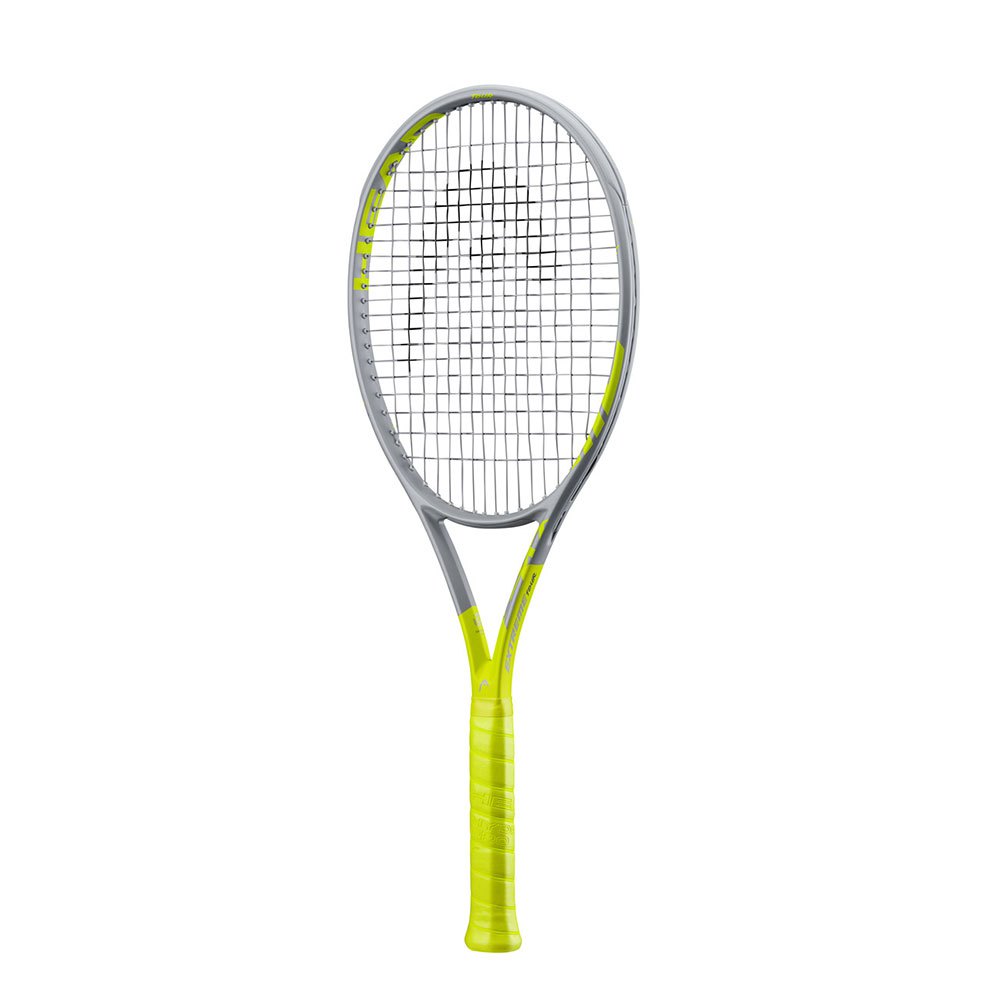
Our Rating: 9.4/10
Specs:
- Ideal for intermediate to advanced baseliners
- More flexible beam than Extreme for enhanced control
- Graphene technology adds power without compromising control
- Maneuverable feel to attack balls early
Item Description:
The HEAD Graphene 360+ Extreme Tour is a fresh addition to the Extreme family, boasting a compact 98in² head and a thinner beam for enhanced control. Featuring a Dynamic String Pattern, it merges dense mains with wider edges, resulting in a mix of precision and comfort. The racquet benefits from Graphene 360+ technology, ensuring power with SpiralFibers for a smoother impact. Additional features like the Spin Shaft and 360 Spin Grommets promote spin and stability. From the baseline, it offers exceptional control, while its lightweight nature ensures swift reactions, making it versatile for both offense and defense. It’s also notably efficient for serves, offering a blend of power and precision. Ideal for experienced players, the Extreme Tour is a testament to HEAD’s commitment to blending power with control.
What to Look for When Choosing a Racket for Professionals
As a pro tennis player, your racket is akin to a craftsman’s finest tool – it should infuse every hit with grace, precision, and strength. However, not all rackets fit the bill. To choose your perfect tool, it’s essential to consider the racket’s composition, strings, and balance, all tailored to complement your skillful techniques.
- Begin with the sweet spot – a head size of 95-100 square inches crafts a large, yet nimble canvas. Such real estate empowers control while allowing quick, deft strokes.
- Yet control requires substance – a strung weight of 10.5 to 11.5 ounces provides the heft for plowing through with groundstroke mastery, without being a burdensome brute.
- Balance enters the equation – a head-light ratio conduces feel in the hand and touch on the ball.
- For finesse, slender beams of 18-21 millimeters fashion responsive feedback, while flexible strings add silken touches to the most sublime drop shot.
Test instruments from the maestros of the trade until you find the one that conducts your signature power and artistry. With the perfect racket as your tool, you can create tennis magic.
When looking for the best tennis rackets for advanced players, it’s important to consider specifications like head size, weight, balance, and flexibility.
When Is It Time to Upgrade to a Professional Tennis Racket
Recreational tennis players may wonder at what point they should upgrade from a standard racket to a professional-level model. Here are some general guidelines on when an amateur player can benefit from the advanced performance of a pro racket:
Skill Level
- Intermediate players at the high school or college club level can gain an edge with pro rackets. The control and touch can elevate groundstrokes, serves, and volleys.
- Competitive juniors and adult tournament players around the 3.5-4.0 NTRP rating have developed consistent, aggressive swings ideal for a advance racket’s power.
Competition Level
- High school #1-2 singles players who compete at the varsity level are candidates for a pro racket.
- Collegiate team competitors will appreciate the spin, control, and stability of a pro racket.
- Any tennis athlete with an advanced swing style and looking to take their game to the next level.
In summary, accomplished, competitive amateur players at the intermediate to advanced skill level can gain an instant boost from the right advance racket model. The precision, finesse, and power offered by professional rackets can help optimize their performance. Professional players demand the best tennis racket for professionals that amplifies their skills with superior control, spin, power, and touch.
Popular brands of Tennis Rackets for Advanced Players
Tennis rackets tailored for advanced players are designed to deliver precision, power, and optimal feel. Among the most recognized brands in this segment include:
- Wilson: Renowned for its Pro Staff and Blade series, often associated with tennis legends like Roger Federer.
- Babolat: The Pure Drive and Pure Strike series are favorites among advanced players for their balance of power and control.
- HEAD: The Prestige and Speed series offer a blend of touch and power, making them popular choices.
- Yonex: The EZONE and VCore series stand out for their unique isometric shape and advanced technology, ensuring accuracy and spin.
- Dunlop: The CX series is recognized for its precision and consistency.
- Prince: Their Phantom and Tour series provide excellent spin and control.
- Tecnifibre: The T-Fight series is revered for its versatility and feel.
These brands have solidified their reputations by consistently delivering high-performance rackets for seasoned players.
Why Trust Our Review Process?
Central to our approach is an unwavering dedication to honest and consistent product reviews. We aim to provide transparent and impartial insights. Our methodology is in-depth, characterized by meticulous evaluation.
We begin by delving deep into the product landscape, examining its features, benefits, and user feedback. This comprehensive exploration ensures we grasp the product’s essence and the value it offers its users.
Subsequently, our experienced professionals personally test the product, examining critical factors such as functionality, durability, user-friendliness, and standout features. We seek to provide a balanced view, highlighting both its advantages and potential shortcomings.
Throughout our evaluation, we incorporate genuine user feedback, resulting in a review that resonates with diverse experiences, bolstering its authenticity.
In essence, our relentless commitment to truthfulness and comprehensive analysis distinguishes us. We aim to deliver trusted reviews, underpinned by detailed scrutiny, assisting you in making enlightened decisions.
FAQ
Does a good tennis racket make a difference?
Absolutely. A quality tennis racket can significantly influence a player’s performance on the court. It can provide better power, control, and comfort. The right racket complements a player’s style, reduces the risk of injury, and can enhance the overall playing experience. Thus, investing in a good tennis racket can indeed make a notable difference in gameplay.
What are the most popular tennis rackets?
The popularity of tennis rackets often varies based on player preferences, regional trends, and professional endorsements. However, brands like Wilson, Babolat, Head, and Yonex frequently emerge as top choices among players. Specific models gain attention based on tournaments, player usage, and technological advancements.
What is the best tennis racquet for advanced players?
The “best” racquet for advanced players is subjective and depends on the player’s unique style and preferences. However, some models are commonly preferred by advanced players for their precision, power, and control. Brands like Wilson Pro Staff, Babolat Pure Strike, and Yonex EZONE DR often cater to advanced players’ needs, but it’s crucial for players to test and find the racquet that best suits their individual gameplay.

I’m Heorhii Rysak, a go-to sports enthusiast and blogger. My fascination with sports began in my childhood with karate, setting the foundation for my love of physical fitness. Over the years, I’ve delved into various disciplines, including martial arts and CrossFit, and developed a passion for tennis. I bring a wealth of practical experience to my blog, where I share equipment reviews, workout plans, and fitness advice. My goal is simple: to inspire and assist you in your journey toward better health and performance.